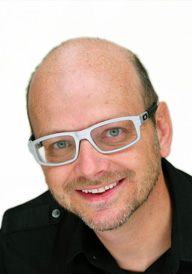


Bonded Restorations in the Posterior Dentition (1/2 day)
Patients' requests and clinicians' interest in esthetic restorations are not limited to anterior teeth. As a result, posterior "tooth-colored" adhesive restorative techniques considerably grew over the last decade and a plethora of materials and methods are available to the clinician today. The survival rates of adhesive restorations in posterior teeth appears to be quite satisfying, even placed by dental students, to the point that some countries today have abandoned the teaching of amalgam restorations and other traditional metallic restorations. Apart from their cosmetic advantage, the new adhesive techniques offer many other benefits such as tissue conservation and natural strengthening of remaining tooth substance. These emerging concepts, which are following the so-called "biomimetic approach", provide the ability to restore not only the esthetic but also the biomechanical and structural integrity of teeth. This presentation will show that dental composites and ceramics constitute striking elements of this nascent approach to tooth restoration. Indications for bonded restorations in the posterior dentition will be presented, including the biomimetic approach to severe loss of coronal substance and nonvital teeth. Attendants should benefit from these considerable improvements that should influence both the medicobiological and socioeconomical approaches of their practice: more sound tissue preservation, maintenance of tooth vitality, less expensive procedures compared to traditional and more invasive "prosthodontics".
Ultraconservative Esthetic Treatment Options (1/2 day)
Although bonded ceramics seem to represent the ultimate biologic, functional, mechanical and esthetic restoration for compromised anterior teeth, the number of ultraconservative treatment strategies continues to grow. The practitioner is faced with many esthetic treatment modalities. The major disadvantage of this evolution is that it becomes increasingly difficult to make the appropriate choice in a given clinical situation. The availability of various treatment alternatives often allows for selection of an approach that conserves the maximum amount of intact tissue and which complies with the biomimetic principle. Treatment options should always first include the simplest procedures such as chemical treatments and freehand composites and then progress toward more sophisticated approaches such as laminate veneers and full coverage crowns only when required. The aim of this presentation is to determine which clinical situations do not require ceramic veneering and can be approached with ultraconservative techniques, combining bleaching and direct application of composite resins.
About the Speaker
Dr. Pascal Magne is an Associate Professor with Tenure and the Don and Sybil Harrington Foundation Chair of Esthetic Dentistry in the Division of Restorative Sciences, University of Southern California, Herman Ostrow School of Dentistry, Los Angeles, CA. He graduated from the University of Geneva Dental School, Switzerland, in 1989 with a Med. Dent. Obtained his Doctorate in 1992 and his Ph.D. degree in 2002. Dr. Magne received postgraduate training in fixed Prosthodontics and occlusion, operative dentistry and endodontics, and was a lecturer at the same university beginning in 1989 until 1997. From 1997-1999, he was a Visiting Associate Professor at the Minnesota Dental Research Center for Biomaterials and Biomechanics, University of Minnesota, School of Dentistry. After concluding two years of research, Dr. Magne returned to University of Geneva Dental School and assumed the position of Senior Lecturer in the Division of Fixed Prosthodontics and Occlusion until he was recruited to the University of Southern California in February 2004.
Dr. Magne is a recipient of multiple awards from the Swiss Science Foundation, the Swiss Foundation for Medical-Biological Grants, and was the recipient of the 2002 Young Investigator Award from the International Association for Dental Research as well as the 2007 and 2009 Judson C. Hickey Scientific Writing Award (for the best research article of the year published in the Journal of Prosthetic Dentistry). He is also the author of numerous clinical and research articles on esthetics and adhesive dentistry and is an internationally known mentor and lecturer on these topics. He also Furthermore, Dr. Magne authored the book Bonded Porcelain Restorations in the Anterior Dentition - A Biomimetic Approach which has been translated into twelve languages and is considered as one of the most outstanding books in the field of adhesive and esthetic dentistry. He is a founding member of the Academy of Biomimetic Dentistry and a mentor of the Bio-Emulation think-tank group. In 2012, he launched a revolutionary approach to the teaching of Dental Morphology, Function and Esthetics (the 2D/3D/4D approach) for freshman students at the Herman Ostrow School of Dentistry of USC.